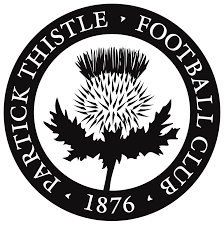
As Partick Thistle FC navigates its path toward the future, envisioning a sustainable growth model is crucial. Sustainable growth not only addresses immediate sporting needs but also accommodates the corporate and community responsibilities inherent in managing a football club. The approach here hinges on strategic planning, resource management, and stakeholder engagement, establishing an ecosystem where football can thrive on and off the pitch.
Strategic Management: Balancing Partick Thistle FC
The urgent need for effective strategic management arises when considering the myriad demands placed upon a football club. With limited revenue streams, Partick Thistle must adeptly balance its financial resources with its ambition for success j88vip1.
In this context, a detailed analysis of the club’s operations must be undertaken to identify key areas requiring investment. For example, investing in youth academies and/or scouting networks can foster a self-sustaining pipeline of talent. A comprehensive financial plan prioritizing long-term gain over short-term setbacks can be a useful framework in aligning the club’s ambitions with its practical capabilities.
Moreover, adopting a community-centric business model may yield additional avenues for revenue generation—such as hosting events or collaborative ventures with local businesses. By establishing partnerships within and beyond the footballing world, Partick Thistle can cultivate nuanced relationships that contribute meaningfully to the club’s finances while forming a strong communal presence.
Building a Cohesive Brand Identity
The essence of Partick Thistle’s brand goes beyond mere sporting success; it is interwoven with the club’s identity, values, and connection with the community. Building a cohesive brand identity hinges on understanding and communicating what the club stands for.
At its core, Partick Thistle embodies the spirit of Glasgow, representing inclusivity, resilience, and pride. A coherent branding strategy will focus on telling the club’s story authentically, tapping into its rich history whilst also articulating a clear vision for the future. This narrative must resonate with fans, partners, and potential sponsors, forming strong emotional connections that drive loyalty and engagement.
Additionally, consistent messaging through various channels—from matchday experiences to digital platforms—can strengthen this brand identity. Innovative marketing campaigns that showcase the club’s unique offerings will help draw broader audiences, enhancing both matchday attendance and merchandise purchases. Through these branding efforts, Partick Thistle has the potential to be recognized as a treasure within Scottish football.
Engaging Stakeholders: Collaboration for Progress
A holistic approach to sustainable growth must involve collaborating with stakeholders across various sectors. Engaging with local government bodies, community organizations, and business leaders can create a supportive environment for the club’s ambitions.
Partick Thistle can benefit from initiatives that increase access to community resources, exploring opportunities for training youth coaches, or setting up outreach programs aimed at underprivileged youth. By focusing on community engagement, the club can forge deeper ties with its fan base, fostering a sense of belonging and shared purpose.
Moreover, establishing a fan advisory group could elevate communication between club management and supporters, ensuring that priorities align and that fan voices contribute to shaping the club’s future. Through dialogue and collaboration, Partick Thistle FC can establish itself as a leading example of how football clubs can work effectively in tandem with their communities, fostering a resilient environment for long-term growth.



